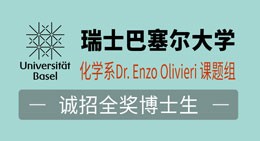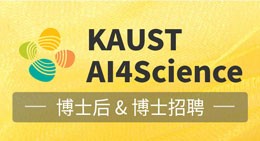样式: 排序: IF: - GO 导出 标记为已读
-
A new paradigm for hybrid reliability-based design optimization: From β-circle to β-cylinder Comput. Methods Appl. Mech. Eng. (IF 6.9) Pub Date : 2025-03-29
Peng Hao, Zehao Cui, Bingyi Du, Hao Yang, Yue ZhangA new paradigm for hybrid reliability-based design optimization (HRBDO) is proposed. The key innovation lies in expanding the traditional β-circle into a β-cylinder along the interval dimensions, integrating both random and interval dimensional information. Building upon this theoretical foundation, a novel interval-based dimensional expansion β-cylinder active learning (IBAL) method is proposed, transforming
-
A generalized non-hourglass updated Lagrangian formulation for SPH solid dynamics Comput. Methods Appl. Mech. Eng. (IF 6.9) Pub Date : 2025-03-28
Shuaihao Zhang, Dong Wu, Sérgio D.N. Lourenço, Xiangyu HuHourglass modes, characterized by zigzag particle and stress distributions, are a common numerical instability encountered when simulating solid materials with updated Lagrangian smoothed particle hydrodynamics (ULSPH). While recent solutions have effectively addressed this issue in elastic materials using an essentially non-hourglass formulation, extending these solutions to plastic materials with
-
The Shifted Boundary Method for contact problems Comput. Methods Appl. Mech. Eng. (IF 6.9) Pub Date : 2025-03-28
Kangan Li, Andrea Gorgi, Riccardo Rossi, Guglielmo ScovazziWe propose an embedded algorithm for contact mechanics based on the Shifted Boundary Method. The contact conditions are applied on a surrogate contact surface in proximity of the true contact surface and Taylor expansions are used to change (shift) both their value and location. This approach is robust, accurate, and avoids integrating the variational formulation on cut cells and related numerical
-
A model-constrained discontinuous Galerkin Network (DGNet) for compressible Euler equations with out-of-distribution generalization Comput. Methods Appl. Mech. Eng. (IF 6.9) Pub Date : 2025-03-28
Hai Van Nguyen, Jau-Uei Chen, Tan Bui-ThanhReal-time accurate solutions of large-scale complex dynamical systems are critically needed for control, optimization, uncertainty quantification, and decision-making in practical engineering and science applications, particularly in digital twin contexts. Recent research on hybrid approaches combining numerical methods and machine learning in end-to-end training has shown significant improvements
-
SK-PINN: Accelerated physics-informed deep learning by smoothing kernel gradients Comput. Methods Appl. Mech. Eng. (IF 6.9) Pub Date : 2025-03-27
Cunliang Pan, Chengxuan Li, Yu Liu, Yonggang Zheng, Hongfei YeThe automatic differentiation (AD) in the vanilla physics-informed neural networks (PINNs) is the computational bottleneck for the high-efficiency analysis. The concept of derivative discretization in smoothed particle hydrodynamics (SPH) can provide an accelerated training method for PINNs. In this paper, smoothing kernel physics-informed neural networks (SK-PINNs) are established, which solve differential
-
Populating cellular metamaterials on the extrema of attainable elasticity through neuroevolution Comput. Methods Appl. Mech. Eng. (IF 6.9) Pub Date : 2025-03-27
Maohua Yan, Ruicheng Wang, Ke LiuThe trade-offs between different mechanical properties of materials pose fundamental challenges in engineering material design, such as balancing stiffness versus toughness, weight versus energy-absorbing capacity, and among the various elastic coefficients. Although gradient-based topology optimization approaches have been effective in finding specific designs and properties, they are not efficient
-
Information entropy regularization method for structural identification with large-scale damaged parameters Comput. Methods Appl. Mech. Eng. (IF 6.9) Pub Date : 2025-03-27
Yifei Wang, Xiaojun Wang, Geyong CaoWith the advancement of structural health monitoring technology, the increasing precision in modeling, scalability of model parameters, and complexity of external environments have introduced significant challenges to damage identification. Notably, the ill-posed nature of large-scale parameter identification from refined models has become a critical technical challenge. Regularization methods are
-
Teaching artificial intelligence to perform rapid, resolution-invariant grain growth modeling via Fourier Neural Operator Comput. Methods Appl. Mech. Eng. (IF 6.9) Pub Date : 2025-03-27
Iman Peivaste, Ahmed Makradi, Salim BelouettarMicrostructural evolution, particularly grain growth, plays a critical role in shaping the physical, optical, and electronic properties of materials. Traditional phase-field modeling accurately simulates these phenomena but is computationally intensive, especially for large systems and fine spatial resolutions. While machine learning approaches have been employed to accelerate simulations, they often
-
Frictional contact between solids: A fully Eulerian phase-field approach Comput. Methods Appl. Mech. Eng. (IF 6.9) Pub Date : 2025-03-27
Flavio Lorez, Mohit PundirRecent advancements have demonstrated that fully Eulerian methods can effectively model frictionless contact between deformable solids. Unlike traditional Lagrangian approaches, which require contact detection and resolution algorithms, the Eulerian framework utilizes a single, fixed spatial mesh combined with a diffuse interface phase-field approach, simplifying contact resolution significantly. Moreover
-
Key conditional quotient of random finite element model under measurement conditions Comput. Methods Appl. Mech. Eng. (IF 6.9) Pub Date : 2025-03-26
Yuelin Zhao, Feng WuUncertainty and nonlinearity in real-world structures like complex connections and composite materials often impede the establishment of accurate finite element models, requiring measurement assistance to estimate the actual structural response. However, accurately and efficiently estimating the structural response in the face of random measurement errors, structural uncertainty, and nonlinear effects
-
Data-driven elastoplastic constitutive modelling with physics-informed RNNs using the Virtual Fields Method for indirect training Comput. Methods Appl. Mech. Eng. (IF 6.9) Pub Date : 2025-03-26
Rúben Lourenço, Petia Georgieva, A. Andrade-CamposThe increasing demand for accurate material behaviour data in engineering simulations has exposed the limitations of traditional constitutive models. Although recent advances in full-field measurement techniques provide more detailed material characterization, conventional approaches still heavily rely on explicit assumptions and labour-intensive experimentation. This paper revisits the indirect training
-
A competitive baseline for deep learning enhanced data assimilation using conditional Gaussian ensemble Kalman filtering Comput. Methods Appl. Mech. Eng. (IF 6.9) Pub Date : 2025-03-26
Zachariah Malik, Romit MaulikEnsemble Kalman Filtering (EnKF) is a popular technique for data assimilation, with far ranging applications. However, the vanilla EnKF framework is not well-defined when perturbations are nonlinear. We study two non-linear extensions of the vanilla EnKF – dubbed the conditional-Gaussian EnKF (CG-EnKF) and the normal score EnKF (NS-EnKF) – which sidestep assumptions of linearity by constructing the
-
Customized Gaussian process for representing polycrystalline texture Comput. Methods Appl. Mech. Eng. (IF 6.9) Pub Date : 2025-03-25
Bingqian Li, Piotr Breitkopf, Ludovic CauvinA customized Gaussian Process Regression (GPR) model is developed to reconstruct Pole Density Functions in texture analysis. The model integrates spherical-periodic distance measures with conventional stationary kernels, adapting the GPR framework to capture localized texture features. A key contribution is the introduction of a log-linear data transformation, which enforces the non-negativity of both
-
RoePINNs: An integration of advanced CFD solvers with Physics-Informed Neural Networks and application in arterial flow modeling Comput. Methods Appl. Mech. Eng. (IF 6.9) Pub Date : 2025-03-25
J. Orera, J. Ramírez, P. García-Navarro, J. MurilloThe characterization of forward and inverse problems describing blood flow dynamics plays a decisive role in numerous biomedical applications. These systems can be modeled using one-dimensional (1D) approaches leading to a hyperbolic system of equations with source terms. Their numerical discretization, associated to the spatial variation of mechanical and geometrical properties, requires advanced
-
Energy stable and structure-preserving algorithms for the stochastic Galerkin system of 2D shallow water equations Comput. Methods Appl. Mech. Eng. (IF 6.9) Pub Date : 2025-03-24
Yekaterina Epshteyn, Akil Narayan, Yinqian YuShallow water equations (SWE) are fundamental nonlinear hyperbolic PDE-based models in fluid dynamics that are essential for studying a wide range of geophysical and engineering phenomena. Therefore, stable and accurate numerical methods for SWE are needed. Although some algorithms are well studied for deterministic SWE, more effort should be devoted to handling the SWE with uncertainty. In this paper
-
Multi-objective Bayesian optimisation of spinodoid cellular structures for crush energy absorption Comput. Methods Appl. Mech. Eng. (IF 6.9) Pub Date : 2025-03-24
Hirak Kansara, Siamak F. Khosroshahi, Leo Guo, Miguel A. Bessa, Wei TanIn the pursuit of designing safer and more efficient energy-absorbing structures, engineers must tackle the challenge of improving crush performance while balancing multiple conflicting objectives, such as maximising energy absorption and minimising peak impact forces. Accurately simulating real-world conditions necessitates the use of complex material models to replicate the non-linear behaviour of
-
EM-based fast uncertainty quantification for bayesian multi-setup operational modal analysis Comput. Methods Appl. Mech. Eng. (IF 6.9) Pub Date : 2025-03-22
Wei Zhu, Binbin Li, Zuo ZhuThe current Bayesian FFT algorithm relies on direct differentiation to obtain the posterior covariance matrix (PCM), which is time-consuming, memory-intensive, and hard to code, especially for the multi-setup operational modal analysis (OMA). Aiming at accelerating the uncertainty quantification in multi-setup OMA, an expectation-maximization (EM)-based algorithm is proposed by reformulating the Hessian
-
Boundary settings for seismic dynamic analysis of rock masses using the nodal-based continuous-discontinuous deformation analysis method Comput. Methods Appl. Mech. Eng. (IF 6.9) Pub Date : 2025-03-22
Yang Xia, Yongtao Yang, Hong Zheng, He Liu, Shuilin WangThe nodal-based continuous-discontinuous deformation analysis method (NCDDAM) proposed by the authors has demonstrated its potential for dynamic analysis of rock masses with discontinuities. However, the existing boundary conditions applied in NCDDAM are not suitable for seismic dynamic analysis, as they can cause fictitious reflected waves. To further apply the NCDDAM for seismic dynamic analysis
-
On a canonical interface model with application to micro-heterogeneous elastic solids Comput. Methods Appl. Mech. Eng. (IF 6.9) Pub Date : 2025-03-22
Ali Javili, Fredrik Larsson, Kenneth Runesson, Paul SteinmannFinite-thickness interphases between different constituents in heterogeneous materials are often replaced by a zero-thickness interface model. Due to increasing area-to-volume ratio with decreasing size of microstructures, interfaces introduce a physical length into the effective response at the macroscale. The most commonly studied interface models are the cohesive interface model and the elastic
-
The Lagrangian-Eulerian described Particle Flow Topology Optimization (PFTO) approach with isogeometric material point method Comput. Methods Appl. Mech. Eng. (IF 6.9) Pub Date : 2025-03-22
Daji Lin, Liang Gao, Jie GaoRecently, several topology optimization methods in the Lagrangian or Eulerian description has accepted a wide of discussions, which have been applied to several design problems. In the current work, the primary intention is to propose the Particle Flow Topology Optimization (PFTO) approach in a Lagrangian-Eulerian description, which can sufficiently unify their unique characteristics and superiorities
-
The Junction Riemann Problem in 1D shallow water channels including supercritical flow conditions Comput. Methods Appl. Mech. Eng. (IF 6.9) Pub Date : 2025-03-21
Juan Mairal, Javier Murillo, Pilar Garcia-NavarroThis work presents an advancement in solving the Shallow Water Equations (SWE) in one-dimensional (1D) networks of channels using the Junction Riemann Problem (JRP). The necessity for robust solvers for junctions in networks is evident from the extensive literature and the variety of proposed methods. While multidimensional coupled approaches that model junctions as two-dimensional spaces have shown
-
Residual stress-constrained space–time topology optimization for multi-axis additive manufacturing Comput. Methods Appl. Mech. Eng. (IF 6.9) Pub Date : 2025-03-21
Kai Wu, Fred van Keulen, Jun WuResidual stresses and distortions are major barriers to the broader adoption of wire arc additive manufacturing. These issues are coupled and arise due to large thermal gradients and phase transformations during the directed energy deposition process. Mitigating distortions may lead to substantial residual stresses, causing cracks in the fabricated components. In this paper, we propose a novel method
-
A multiscale design method using interpretable machine learning for phononic materials with closely interacting scales Comput. Methods Appl. Mech. Eng. (IF 6.9) Pub Date : 2025-03-20
Mary V. Bastawrous, Zhi Chen, Alexander C. Ogren, Chiara Daraio, Cynthia Rudin, L. Catherine BrinsonManipulating the dispersive characteristics of vibrational waves is beneficial for many applications, e.g., high-precision instruments. architected hierarchical phononic materials have sparked promise tunability of elastodynamic waves and vibrations over multiple frequency ranges. In this article, hierarchical unit-cells are obtained, where features at each length scale result in a band gap within
-
Spatiotemporal modeling based on manifold learning for collision dynamic prediction of thin-walled structures under oblique load Comput. Methods Appl. Mech. Eng. (IF 6.9) Pub Date : 2025-03-19
Jian Xie, Junyuan Zhang, Hao Zhou, Zihang Li, Zhongyu LiNumerical simulation of the collision dynamics in thin-walled structures under oblique load involves complex spatiotemporal processes, including material, geometric, and contact nonlinearities, which often require significant computational resources and time. Moreover, predicting high-dimensional spatiotemporal responses remains a challenge for most surrogate-based models. This paper proposes a deep
-
Self-propelling, soft, and slender structures in fluids: Cosserat rods immersed in the velocity–vorticity formulation of the incompressible Navier–Stokes equations Comput. Methods Appl. Mech. Eng. (IF 6.9) Pub Date : 2025-03-19
Arman Tekinalp, Yashraj Bhosale, Songyuan Cui, Fan Kiat Chan, Mattia GazzolaWe present a hybrid Eulerian–Lagrangian method for the direct simulation of three-dimensional, heterogeneous, active, and self-propelling structures made of soft fibers and operating in incompressible viscous flows. Fiber-based organization of matter is pervasive in nature and engineering, from biological architectures made of cilia, hair, muscles or bones to polymers, composite materials or soft robots
-
Harnessing dynamic turbulent dynamics in parrot optimization algorithm for complex high-dimensional engineering problems Comput. Methods Appl. Mech. Eng. (IF 6.9) Pub Date : 2025-03-19
Mahmoud Abdel-Salam, Saleh Ali Alomari, Jing Yang, Sangkeum Lee, Kashif Saleem, Aseel Smerat, Vaclav Snasel, Laith AbualigahThe Parrot Optimization Algorithm (PO) is a nature-inspired metaheuristic algorithm developed based on the social and adaptive behaviors of Pyrrhura molinae parrots. PO demonstrates robust optimization performance by balancing exploration and exploitation, mimicking foraging and cooperative activities. However, as the algorithm progresses through iterations, it faces critical challenges in maintaining
-
Deep learning-based surrogate capacity models and multi-objective fragility estimates for reinforced concrete frames Comput. Methods Appl. Mech. Eng. (IF 6.9) Pub Date : 2025-03-18
Lili Xing, Paolo Gardoni, Ge Song, Ying ZhouThis paper proposes surrogate capacity models for reinforced concrete frames (RCFs) using deep neural networks (DNNs) and Transformers to address the strong nonlinearity in structural deformation. After validating the finite element modeling method, an extensive stochastic finite element analysis is conducted to construct a comprehensive capacity database. The hyperparameters for the DNN architecture
-
Mutual-information-based dimensional learning: Objective algorithms for identification of relevant dimensionless quantities Comput. Methods Appl. Mech. Eng. (IF 6.9) Pub Date : 2025-03-18
Lei Zhang, Guowei HeThe classical dimensional analysis provides powerful insights into underlying physical mechanisms, but has limitations in determining the uniqueness and measuring the relative importance of dimensionless quantities. To address these limitations, we propose a data-driven approach, called mutual-information-based dimensional learning, to identify unique and relevant dimensionless quantities from available
-
A novel energy-fitted hexagonal quadrature scheme enables low-cost and high-fidelity peridynamic computations Comput. Methods Appl. Mech. Eng. (IF 6.9) Pub Date : 2025-03-18
Emely Schaller, Ali Javili, Paul SteinmannIn this contribution, we propose a novel hexagonal quadrature scheme for one-neighbor interactions in continuum-kinematics-inspired peridynamics equivalent to bond-based peridynamics. The hexagonal quadrature scheme is fitted to correctly integrate the stored energy density within the nonlocal finite-sized neighborhood of a continuum point subject to affine expansion. Our proposed hexagonal quadrature
-
On the mesh insensitivity of the edge-based smoothed finite element method for moving-domain problems Comput. Methods Appl. Mech. Eng. (IF 6.9) Pub Date : 2025-03-18
Tao HeAlthough much less sensitive to mesh distortion, the edge-based smoothed finite element method (ESFEM) can become ineffective on severely distorted elements whose Jacobians are less than or equal to zero, especially in transient cases. In this work, we first prove that the ESFEM may be unable to get over severe mesh distortion occurring even in a very simple mesh of four four-node quadrilateral (Q4)
-
Projection-based model order reduction of embedded boundary models for CFD and nonlinear FSI Comput. Methods Appl. Mech. Eng. (IF 6.9) Pub Date : 2025-03-16
Noah B. Youkilis, Charbel FarhatEmbedded boundary methods (EBMs) for Computational Fluid Dynamics (CFD) and nonlinear fluid–structure interaction (FSI) – also known as immersed boundary methods, Cartesian methods, or fictitious domain methods – are the most robust methods for the solution of flow problems past obstacles that undergo large relative motions, significant deformations, large shape modifications, and/or surface topology
-
Multi-Objective Loss Balancing for Physics-Informed Deep Learning Comput. Methods Appl. Mech. Eng. (IF 6.9) Pub Date : 2025-03-16
Rafael Bischof, Michael A. KrausPhysics-Informed Neural Networks (PINN) are deep learning algorithms that leverage physical laws by including partial differential equations together with a respective set of boundary and initial conditions as penalty terms in their loss function. In this work, we observe the significant role of correctly weighting the combination of multiple competitive loss functions for training PINNs effectively
-
A data-driven modeling framework for nonlinear static aeroelasticity Comput. Methods Appl. Mech. Eng. (IF 6.9) Pub Date : 2025-03-14
Trent White, Darren HartlAnalyzing the multiphysical coupling between a deformable structural body and the forces imposed on that body from a surrounding fluid can be a challenging and computationally expensive task, especially when the structure, fluid, or both exhibit nonlinear behavior. Consequently, there exists a need for novel reduced-order static aeroelasticity analysis techniques that make efficient use of high-fidelity
-
A finite element-based simulation of microstructure evolution through a 3D finite strain Cosserat phase-field model Comput. Methods Appl. Mech. Eng. (IF 6.9) Pub Date : 2025-03-14
Jad Doghman, Christophe Bovet, Anna AskA computational framework for microstructure evolution in metallic polycrystals is achieved by coupling large deformation Cosserat isotropic hyperelasticity with a phase-field model to take into account grain boundary formation and motion. Each material point has an associated crystal lattice orientation described by the Cosserat microrotation, which can evolve due to deformation or grain boundary
-
Gradient flow based phase-field modeling using separable neural networks Comput. Methods Appl. Mech. Eng. (IF 6.9) Pub Date : 2025-03-14
Revanth Mattey, Susanta GhoshAllen–Cahn equation is a reaction–diffusion equation and is widely used for modeling phase separation. Machine learning methods for solving the Allen–Cahn equation in its strong form suffer from inaccuracies in collocation techniques, errors in computing higher-order spatial derivatives, and the large system size required by the space–time approach. To overcome these challenges, we propose solving
-
Multi-fidelity physics-informed machine learning framework for fatigue life prediction of additive manufactured materials Comput. Methods Appl. Mech. Eng. (IF 6.9) Pub Date : 2025-03-13
Lanyi Wang, Shun-Peng Zhu, Borui Wu, Zijian Xu, Changqi Luo, Qingyuan WangThe development direction of high reliability and longer serviceable life for major equipment requires accurate fatigue life predictions of additively manufactured (AM) components. However, small samples and high scatter of fatigue performance have become significant challenges in accurately modeling the fatigue failure behavior of AM components. To overcome the limitation of traditional fatigue life
-
Compatible finite element interpolated neural networks Comput. Methods Appl. Mech. Eng. (IF 6.9) Pub Date : 2025-03-13
Santiago Badia, Wei Li, Alberto F. MartínWe extend the finite element interpolated neural network (FEINN) framework from partial differential equations (PDEs) with weak solutions in H1 to PDEs with weak solutions in H(curl) or H(div). To this end, we consider interpolation trial spaces that satisfy the de Rham Hilbert subcomplex, providing stable and structure-preserving neural network discretisations for a wide variety of PDEs. This approach
-
Output probability distribution estimation of stochastic static and dynamic systems using Laplace transform and maximum entropy Comput. Methods Appl. Mech. Eng. (IF 6.9) Pub Date : 2025-03-13
Yang Zhang, Chao Dang, Jun Xu, Michael BeerEffectively estimating output probability distributions in stochastic static and dynamic systems with a limited number of simulations is a significant challenge, especially for complex distributions with multi-modality and heavy tails. To address this challenge, this work explores the potential of the Laplace Transform (LT) and its inversion. First, the statistical information embedded in the derivatives
-
A coupled immersed boundary method and isogeometric shell analysis for fluid–structure interaction of flexible and lightweight shells in high-Reynolds number flows Comput. Methods Appl. Mech. Eng. (IF 6.9) Pub Date : 2025-03-12
Keye Yan, Yue Wu, Qiming Zhu, Boo Cheong KhooThis study presents an efficient numerical framework for simulating fluid–structure interactions (FSIs) involving flexible, lightweight shells subjected to high-Reynolds-number flows. By combining the immersed boundary method (IBM) and isogeometric analysis (IGA), the framework incorporates three major innovations: (1) a wall-modeling, direct-forcing, diffused-interface IBM tailored for FSI simulations
-
An analytical exact, locking free element formulation for thin-walled composite Timoshenko beams Comput. Methods Appl. Mech. Eng. (IF 6.9) Pub Date : 2025-03-12
Michael Jäger, Jacqueline Albertsen, Sandro WartzackSpatial truss structures represent a robust, cost-effective, and efficient lightweight design, especially when isotropic materials are substituted with lightweight materials such as composites. During early design phases, truss structures are often subject to optimisations. In order to achieve this in an efficient manner, it is essential to employ a precise yet cost-effective computational model. The
-
Locking and stabilization free Hybrid Virtual Elements for the coarse mesh analysis of elastic thick plates Comput. Methods Appl. Mech. Eng. (IF 6.9) Pub Date : 2025-03-12
F. Liguori, A. Madeo, S. Marfia, G. Garcea, E. SaccoThis work presents a Virtual Element formulation (VE) for shear-deformable elastic plates. In particular, the Hybrid Virtual Element Method (HVEM) is adopted, which assumes a self-equilibrated stress interpolation and an energy-based projection, eliminating the need for stabilization terms. This choice, together with a cubic linked interpolation for displacement and rotations, makes the approach free
-
Probabilistic learning from real-world observations of systems with unknown inputs for model-form UQ and digital twinning Comput. Methods Appl. Mech. Eng. (IF 6.9) Pub Date : 2025-03-11
Zimi J. Zhang, Akmal Bakar, Adrian Humphry, Farhad Javid, Patrick Nadeau, Mehran Ebrahimi, Adrian Butscher, Alexander Tessier, Jesus Rodriguez, Charbel FarhatIn engineering systems, a digital twin serves as a digital replica encompassing both physical assets and their associated processes, such as manufacturing and certification. The implementation of digital twins offers substantial potential for various applications, including improved design, enhanced collaboration, effective energy management, risk mitigation, lifecycle management, and predictive maintenance
-
Prediction of damage evolution in CMCs considering the real microstructures through a deep-learning scheme Comput. Methods Appl. Mech. Eng. (IF 6.9) Pub Date : 2025-03-11
Rongqi Zhu, Guohao Niu, Panding Wang, Chunwang He, Zhaoliang Qu, Daining FangThe real microstructures of ceramic matrix composites (CMCs) play a crucial role in determining their damage behavior. However, considering the real microstructure within the high-fidelity numerical simulation usually leads to expensive computational costs. In this study, an end-to-end deep-learning (DL) framework is proposed to predict the evolution of damage fields for CMCs from their real microstructures
-
Path-following strategy with consistent Jacobian for periodic solutions in multi-DOF nonlinear dynamic systems Comput. Methods Appl. Mech. Eng. (IF 6.9) Pub Date : 2025-03-11
Domenico Magisano, Giovanni FormicaWe propose an enhanced pseudo-arclength path-following technique for recovering periodic solutions in high-dimensional nonlinear dynamic systems using the Poincaré map method. The key innovation is the direct computation of the Jacobian matrix within the time-marching algorithm used to obtain periodic orbits, including both the monodromy matrix and derivatives with respect to the continuation parameter
-
Explicit Dual-Mesh virtual element method for 2D nonlinear dynamic problems Comput. Methods Appl. Mech. Eng. (IF 6.9) Pub Date : 2025-03-11
Ruopu Zhou, Zhixin Zeng, Xiong ZhangA novel explicit Dual-Mesh virtual element method (DM-VEM) for two dimensional nonlinear dynamic problems is proposed. The DM-VEM employs an Eulerian background grid to solve the momentum equation of the virtual element method (VEM), which significantly improves the spatial stability and the temporal stability of the VEM. An explicit critical time step formula is first developed for one dimensional
-
Kolmogorov–Arnold PointNet: Deep learning for prediction of fluid fields on irregular geometries Comput. Methods Appl. Mech. Eng. (IF 6.9) Pub Date : 2025-03-11
Ali KashefiKolmogorov–Arnold Networks (KANs) have emerged as a promising alternative to traditional Multilayer Perceptrons (MLPs) in deep learning. KANs have already been integrated into various architectures, such as convolutional neural networks, graph neural networks, and transformers, and their potential has been assessed for predicting physical quantities. However, the combination of KANs with point-cloud-based
-
A clustering-based multiscale topology optimization framework for efficient design of porous composite structures Comput. Methods Appl. Mech. Eng. (IF 6.9) Pub Date : 2025-03-11
Jinlong Liu, Zhiqiang Zou, Zeyang Li, Min Zhang, Jie Yang, Kang Gao, Zhangming WuThe optimization design of the microstructures and their macro distribution in porous composite structures (PCS) offers significant potential for achieving both lightweight and functional performance. This paper proposes a novel optimization design framework for PCS with varying densities and multiple microstructures. Initially, components topology optimization (TO-Components) using ordered SIMP interpolation
-
Self-stabilized virtual element modeling of 2D mixed-mode cohesive crack propagation in isotropic elastic solids Comput. Methods Appl. Mech. Eng. (IF 6.9) Pub Date : 2025-03-10
Y. Chen, D. Sun, Q. Li, U. PeregoA comprehensive strategy for the simulation of mixed-mode cohesive crack propagation in a mesh of originally self-stabilized Virtual Elements (VEs) is proposed. Exploiting the VEs substantial insensitivity to mesh distortion, the propagating cohesive crack is accommodated within existing self-stabilized first-order quadrilateral VEs by simply adding new edges separated by a cohesive interface. The
-
Similarity equivariant graph neural networks for homogenization of metamaterials Comput. Methods Appl. Mech. Eng. (IF 6.9) Pub Date : 2025-03-10
Fleur Hendriks, Vlado Menkovski, Martin Doškář, Marc G.D. Geers, Ondřej RokošSoft, porous mechanical metamaterials exhibit pattern transformations that may have important applications in soft robotics, sound reduction and biomedicine. To design these innovative materials, it is important to be able to simulate them accurately and quickly, in order to tune their mechanical properties. Since conventional simulations using the finite element method entail a high computational
-
FCA method for predicting effective viscosity of particle reinforced thermoplastic melt and a metric for measuring clusters Comput. Methods Appl. Mech. Eng. (IF 6.9) Pub Date : 2025-03-09
Zheng Li, Yinghao Nie, Gengdong ChengThe effective viscosity of particle reinforced thermoplastic melt shows strongly anisotropic behavior and is also shear rate-dependent. The traditional homogenization method may face challenge due to extremely expensive computational cost, when the non-linear effective viscosities on all the directions of Particle Reinforced Thermoplastics (PRT) are demanded. This paper approaches this challenge with
-
Adaptive multi-patch isogeometric analysis for heat transfer in three-dimensional solid Comput. Methods Appl. Mech. Eng. (IF 6.9) Pub Date : 2025-03-09
Lin Wang, Tiantang Yu, Sundararajan Natarajan, Weihua Fang, Zhiwei ZhouThis paper presents an adaptive multi-patch isogeometric framework for modeling heat conduction in isotropic/orthotropic media. The proposed adaptive scheme is a novel combination of local mesh refinement and adaptive time-stepping to improve the calculation efficiency and reduce meshing burden. The local adaptive refinement is driven by a recovery-based error estimator. Truncated hierarchical NURBS
-
Nonlinear dynamic substructuring in the frequency domain Comput. Methods Appl. Mech. Eng. (IF 6.9) Pub Date : 2025-03-09
Hossein Soleimani, Niels AageIn this paper, we introduce a nonlinear dynamic substructuring technique to efficiently evaluate nonlinear systems with localized nonlinearities in the frequency domain. A closed-form equation is derived from coupling the dynamics of substructures and nonlinear connections. The method requires the linear frequency response functions of the substructures, which can be calculated independently using
-
On efficient simulation of self-assembling diblock copolymers using a peridynamic-enhanced Fourier spectral method Comput. Methods Appl. Mech. Eng. (IF 6.9) Pub Date : 2025-03-08
Farshid Mossaiby, Gregor Häfner, Arman Shojaei, Alexander Hermann, Christian Cyron, Marcus Müller, Stewart SillingThis study introduces a computational framework for simulating the self-assembly of diblock copolymers using a novel peridynamic (PD)-enhanced Fourier spectral method (FSM). Diblock copolymers, composed of two distinct polymer blocks, are capable of forming nanostructured domains with applications in nanoelectronics, photonics, and advanced membranes. Current simulation techniques face challenges in
-
Assessing the Capriccio method via one-dimensional systems for coupled continuum-particle simulations in various uniaxial load cases using a novel interdimensional comparison approach Comput. Methods Appl. Mech. Eng. (IF 6.9) Pub Date : 2025-03-07
Lukas Laubert, Felix Weber, Sebastian PfallerThis contribution investigates sources of insufficiencies observed with the Capriccio method for concurrent continuum-particle coupling using a novel comparison technique. This approach maps the deformation states of three-dimensional (3D) coupled domains into a concise one-dimensional (1D) representation, which allows for a separate evaluation of the domain strains in a unified representation, enabling
-
Dynamic particle packing to generate complex geometries Comput. Methods Appl. Mech. Eng. (IF 6.9) Pub Date : 2025-03-06
Muhammad Sameer, C. Fred Higgs IIIAnalyzing the discrete nature of solid structures is crucial, particularly in situations where system behavior relies on material discontinuities, such as fracture and wear, along with their subsequent effects. It is not only essential to investigate when failure or discontinuity occurs within a material, but also how it unfolds and impacts its surroundings. While numerical methods serve as effective
-
Three-dimensional varying-order NURBS discretization method for enhanced IGA of large deformation frictional contact problems Comput. Methods Appl. Mech. Eng. (IF 6.9) Pub Date : 2025-03-05
Vishal AgrawalIn this contribution, we introduce a varying-order (VO) NURBS discretization method to enhance the performance of the isogeometric analysis (IGA) technique for solving three-dimensional (3D) large deformation frictional contact problems involving two deformable bodies. Building on the promising results obtained from the previous work on the 2D isogeometric contact analysis (Agrawal and Gautam, 2020)
-
Region-optimal Gaussian process surrogate model via Dirichlet process for cold-flow and combustion emulations Comput. Methods Appl. Mech. Eng. (IF 6.9) Pub Date : 2025-03-04
Mingshuo Zhou, Ruiye Zuo, Chih-Li Sung, Yanjie Tong, Xingjian WangSurrogate modeling plays an increasingly important role in engineering design. The present work develops a novel surrogate model, region-optimal Gaussian process (roGP), to accurately emulate cold-flow and combustion fields in a significantly short time period. The model leverages an advanced statistical approach, Dirichlet process (DP) mixture model, to partition the entire spatial domain of concern
-
A coupled thermo-chemo-mechanical peridynamic model for predicting process-induced residual stress in fiber-reinforced polymer composites Comput. Methods Appl. Mech. Eng. (IF 6.9) Pub Date : 2025-03-04
Weikang Sun, Jiaxiang Liew, Zhifei Tan, Yang Zhang, Binbin YinFiber reinforced polymer (FRP) composites have extensive applications in aerospace, automobile, marine and sports industries, however, the process-induced residual stress developed during the cure process can lead to microcracks and weaken the macroscopic mechanical performance. In this work, we developed a multiscale PD framework for modeling thermo-chemo-mechanical behaviors of FRP composites for
-
Addressing concave boundaries in two-dimensional pointwise contact detection under the common-normal concept Comput. Methods Appl. Mech. Eng. (IF 6.9) Pub Date : 2025-03-03
Lucas da Silva, Marina Vendl Craveiro, Alfredo Gay NetoContact search, the step where pairs of interacting points are identified, is crucial in computer methods for contact mechanics. This work explores the properties of contact pairs in a specific approach known as master-master method, combined with a hybrid-barrier enforcement method. The scope is on two-dimensional non-conformal contact, modeled as pointwise. Line-to-line and other instances of flat
-
Forward and inverse simulation of pseudo-two-dimensional model of lithium-ion batteries using neural networks Comput. Methods Appl. Mech. Eng. (IF 6.9) Pub Date : 2025-03-02
Myeong-Su Lee, Jaemin Oh, Dong-Chan Lee, KangWook Lee, Sooncheol Park, Youngjoon HongIn this work, we address the challenges posed by the high nonlinearity of the Butler–Volmer (BV) equation in forward and inverse simulations of the pseudo-two-dimensional (P2D) model using the physics-informed neural network (PINN) framework. The BV equation presents significant challenges for PINNs, primarily due to the hyperbolic sine term, which renders the Hessian of the PINN loss function highly

































 京公网安备 11010802027423号
京公网安备 11010802027423号